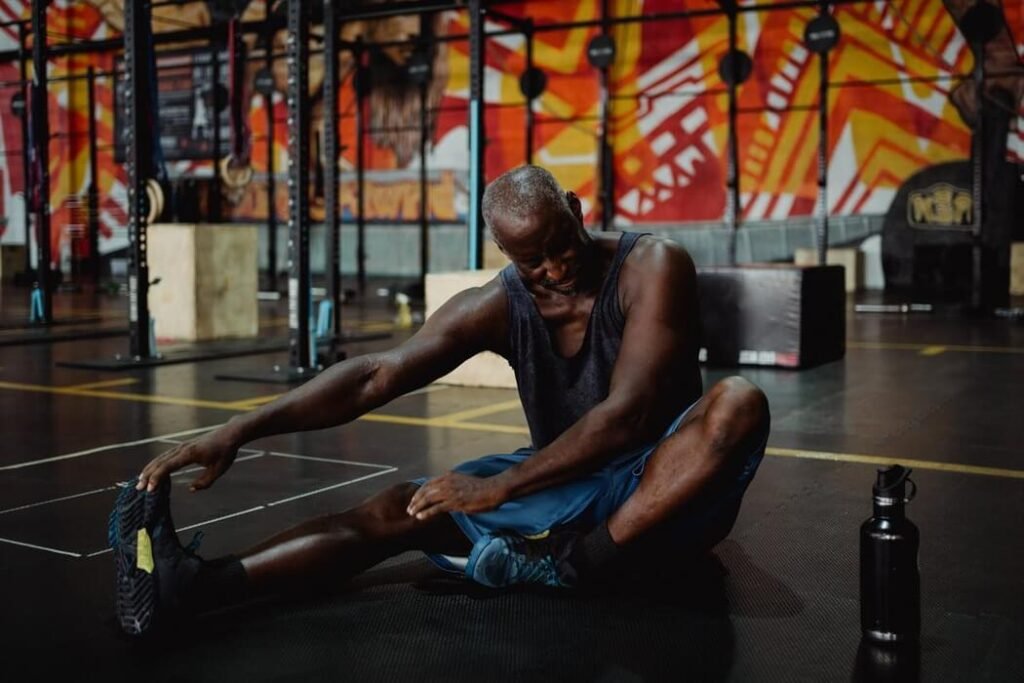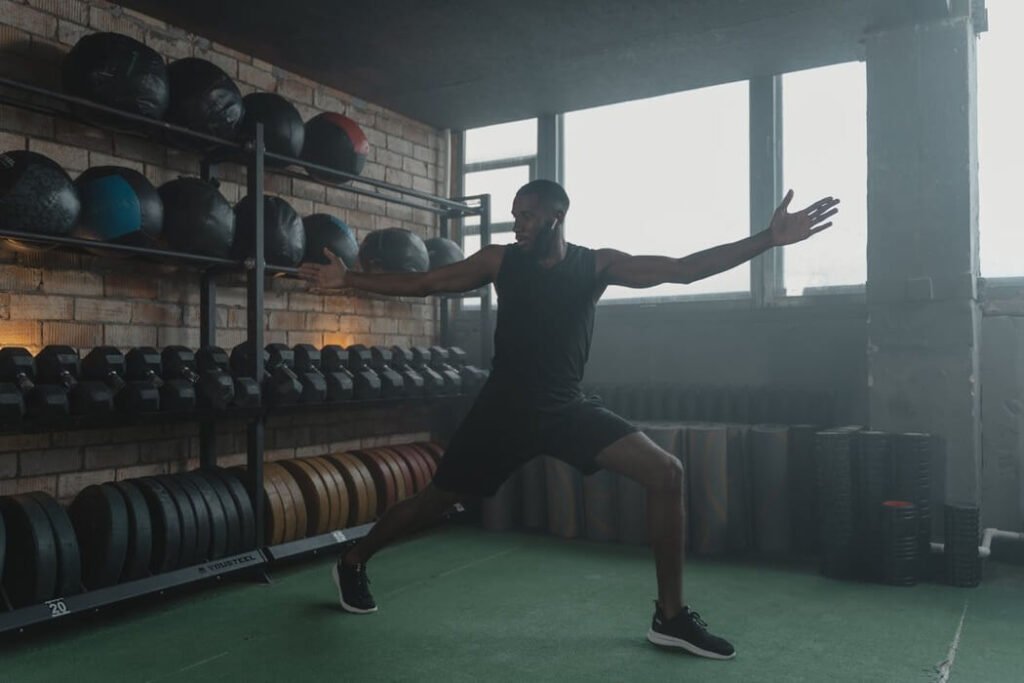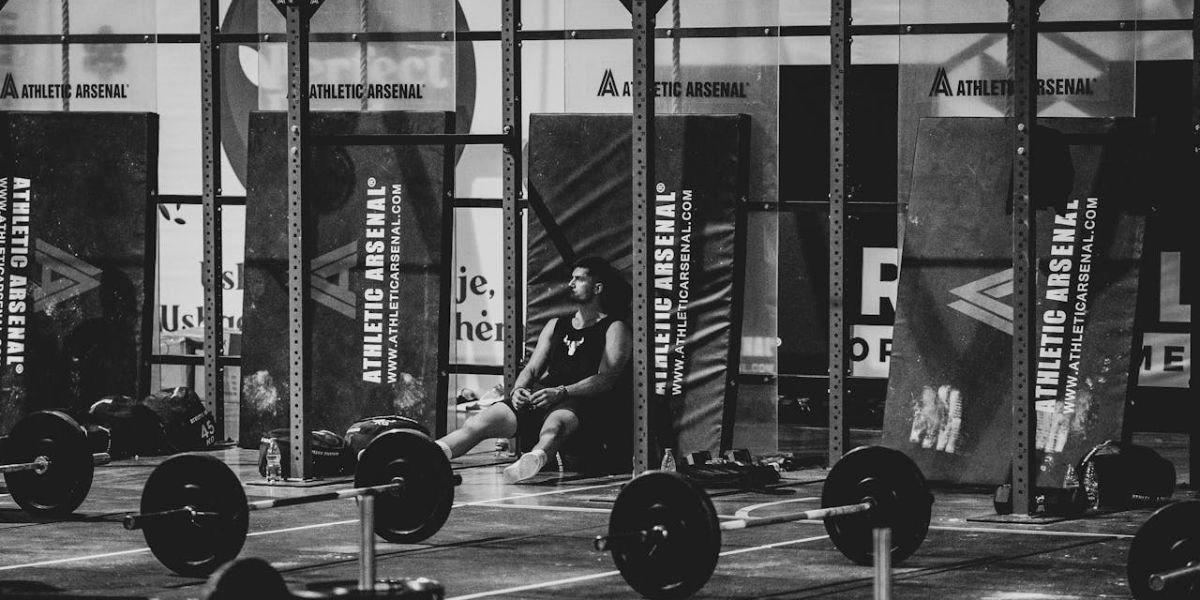What actually counts as recovery and what’s just rest? More importantly, are you using both the right way?
In this post, we break down what recovery in fitness is all about, with real, science-backed, action-ready advice and practical examples you can use right away.
This is for anyone who trains hard and lives actively. Whether you’re hitting the gym, the trail, or grinding through a physical job, recovery matters just as much as your training.
Without the right rest and recovery, you’re slowing progress, risking injury, and leaving gains on the table. No matter how hard you train.
Table of Contents
What is Recovery in fitness, And What’s Rest?

Rest is part of your body’s natural recovery process.
After a hard workout or intense physical effort, you need rest to let your body recover. It’s essential for repairing strain and maintaining health (source).
Once you’ve rested, you can also add additional recovery strategies to support the process.
So, rest and recovery aren’t two separate things; they’re connected.
They work together to repair your body and help you adapt to stress.
Here’s a breakdown of each:
Rest:
- Rest is needed to recover. Period.
- Rest means time off. No training. No added physical or mental stress.
That could be sitting on the couch, taking a nap, or doing something low-effort that helps you switch off.
- Sleep is the most important form of rest. If your sleep isn’t good, your recovery won’t be either. (Find more benefits of sleep here.)
- And just because you’re not being active doesn’t mean you’re recovering. If your mind is stressed out all day, your body still feels it too.
- That stress keeps your nervous system in “fight or flight” mode (sympathetic state).
For real recovery, your body needs time in “rest and digest” (parasympathetic state). Where your nervous system actually calms down (source)
Tip:
Rest alone isn’t always enough. Without proper nutrition, hydration, or good sleep, you still might not recover fully. (source)
Recovery:
- Recovery is the process of restoring both your body and mind after training, helping return your system to baseline so you can adapt and perform again (source).
- Rest makes up a big part of your body’s recovery, but additional recovery strategies are also just as important.
- These additional recovery strategies reduce fatigue and help your body adapt so you get stronger and fitter over time.
- This includes both active and passive recovery. (source)
- For example, light movement, better nutrition, and improved sleep habits all help speed recovery (Queensland Health).
Tip:
Don’t forget, recovery always includes rest. They work together

Active vs Passive Recovery
Not all recovery is the same. Some days, you need total rest. Other days, a bit of movement can actually help you recover faster.
Both active and passive recovery methods have been shown to improve fatigue resistance and support aerobic fitness. (source)
This means it depends on your situation and might mean doing more of one than the other or a bit of both, active and passive recovery.
Passive Recovery:

This is restful, you stop adding load while focusing on other recovery strategies, so your body can repair.
It gives your body the time and energy to prioritise tissue repair, replenish glycogen stores, and rebalance your nervous system, all without adding new demands. (source)
Examples include:
- Full rest days
- Sleep
- Nutrition and Hydration
- Reducing mental stress
Tip:
Without these, your body can’t adapt properly, even with the best training.
Active Recovery:

This is light, low-intensity, structured movement that helps you recover or even make progress, without pushing harder. The goal isn’t to train hard, but to keep moving while letting your body restore itself.
Research shows that active recovery can improve circulation, helping to flush out metabolic waste, deliver nutrients to muscles, reduce soreness, and speed up recovery. (source)
Some research also suggests that after moderate-intensity training, active recovery may be more effective than passive rest for promoting recovery and preventing overreaching. (source)
Examples include:
- Light walking
- Mobility or stretching
- Easy swimming or cycling
- Deload weeks (reduced training load for a set amount of time)
Tip:
Reducing soreness is the main benefit of active recovery.
When to Use Additional Recovery

Once you’ve rested, the next step is figuring out what else (if anything) will actually help you recover; that’s what additional recovery is.
The right choice can be as simple as these 3 things:
- What kind of stress or training are you recovering from?
Different types of training or stress require different recovery methods. For example, muscle soreness might call for light movement, while mental fatigue might need more rest and stress reduction.
- How do you feel right now, and what do you have time for?
Check in honestly. If you’re drained mentally, passive recovery may be best. If you’re physically sore but mentally sharp, active recovery could help more.
- What are your long-term fitness goals?
Your recovery strategy should support your goals and long-term vision for where you want to be. (Check out our guide on finding the right fitness goals.)
Tip:
Also, depending on the pain or injury, you might need more specialised recovery that a physio or trained professional can help with.
Examples for everyday recovery:

There’s no magic bullet or one-size-fits-all recovery method, just like training.
These will look different for you, but for me, active recovery from something like a hard run, often means a walk with my dog while listening to a good podcast, just enough to get my body and mind moving without adding more stress.
Examples for deciding between active and passive recovery:
| Situation | Best Recovery Choice |
| Heavy weights session yesterday, but feeling alright | Active recovery (light movement, mobility) |
| Training hard for weeks, progress is slowing | Passive recovery + deload (full rest, extra sleep, easier sessions) |
| Mentally stressed, low sleep | Passive recovery (less stimulation, rest, sleep, stress relief) |
| Sore from training, but not injured | Active recovery (walk, yoga, stretch) |
| Deep soreness, joint pain, or injury signs | Full rest or seek help (don’t push through) |
Tip:
Sometimes the best “tool” isn’t doing more, it’s doing less, but doing it better.
Summary:
Rest is always needed and is a crucial part of recovery. Without it, nothing else works. From there, it’s about doing the next best thing based on how you feel, what you’ve done, and what’s coming up.
Sometimes that means full rest. Other times, it means a mix of passive and active recovery methods.
The right choice depends on your goals and what will actually help you feel and perform better.
There are hundreds of different scenarios and solutions, but hopefully, now you have a clearer understanding of how to use both rest and additional recovery to support your training and get more from your efforts.
Try This:
Pick one recovery method and give it a go. See how you feel the next day and adjust based on that.
That feedback is the most honest recovery guide I can give you.
Want more?
We’ll break down popular recovery tools like ice baths, foam rolling, massage guns, and more in a future post to find what’s worth your time and what’s not.
Have any questions or suggestions? Feel free to contact us here.
References:
- Asp, M., & Fagerberg, I. (2005). Rest in the care situation: the meaning of rest as experienced by patients with long-term illness. Scandinavian Journal of Caring Sciences, 19(2), 165–172. Available at: https://pmc.ncbi.nlm.nih.gov/articles/PMC5342845/
- NIH News in Health. (2021). Good Sleep, Good Health. NIH. Available at: https://newsinhealth.nih.gov/2021/04/good-sleep-good-health
- Cleveland Clinic. Sympathetic Nervous System (SNS): Fight or Flight. Available at: https://my.clevelandclinic.org/health/body/23262-sympathetic-nervous-system-sns-fight-or-flight
- Cleveland Clinic. Parasympathetic Nervous System (PSNS): Rest and Digest. Available at: https://my.clevelandclinic.org/health/body/23266-parasympathetic-nervous-system-psns
- Harvard Health Publishing. Understanding the stress response. Harvard Health. Available at: https://www.health.harvard.edu/staying-healthy/understanding-the-stress-response
- Hausswirth, C., & Mujika, I. (2013). Recovery for Performance in Sport. Human Kinetics. Available at: https://pmc.ncbi.nlm.nih.gov/articles/PMC6745602/
- Kellmann, M., Bertollo, M., Bosquet, L., Brink, M., Coutts, A. J., Duffield, R., … & Beckmann, J. (2018). Recovery and Performance in Sport: Consensus Statement. International Journal of Sports Physiology and Performance, 13(2), 240–245. Available at: https://pmc.ncbi.nlm.nih.gov/articles/PMC10914654/
- Venter, R. E. (2012). Role of sleep in performance and recovery of athletes: A review article. South African Journal for Research in Sport, Physical Education and Recreation, 34(1), 167–184. Available at: https://pubmed.ncbi.nlm.nih.gov/30421874/
- Queensland Health. (n.d.). Rest and Recovery. Health and Wellbeing Queensland. Available at: https://hw.qld.gov.au/blog/rest-and-recovery/
- Hausswirth, C., & Mujika, I. (2013). Recovery for Performance in Sport. Human Kinetics.
- Dupuy, O., Douzi, W., Theurot, D., Bosquet, L., & Dugué, B. (2018). An Evidence-Based Approach for Choosing Post-exercise Recovery Techniques to Reduce Markers of Muscle Damage, Soreness, Fatigue, and Inflammation: A Systematic Review With Meta-Analysis. International Journal of Sports Physiology and Performance, 13(2), 240–245. Available at: https://journals.humankinetics.com/view/journals/ijspp/13/2/article-p240.xml
- Zahidi, M., Hashemizadeh, H., & Ghasemi, G. A. (2022). Active recovery is better than passive recovery to optimizing post-exercise body recovery. ResearchGate. Available at: https://www.researchgate.net/publication/360518452_Active_recovery_is_better_than_passive_recovery_to_optimizing_post-_exercise_body_recovery
- Pioneer Gains. (n.d.). How to Find the Right Fitness Goals. Available at: https://pioneergains.com/how-to-find-the-right-fitness-goals




